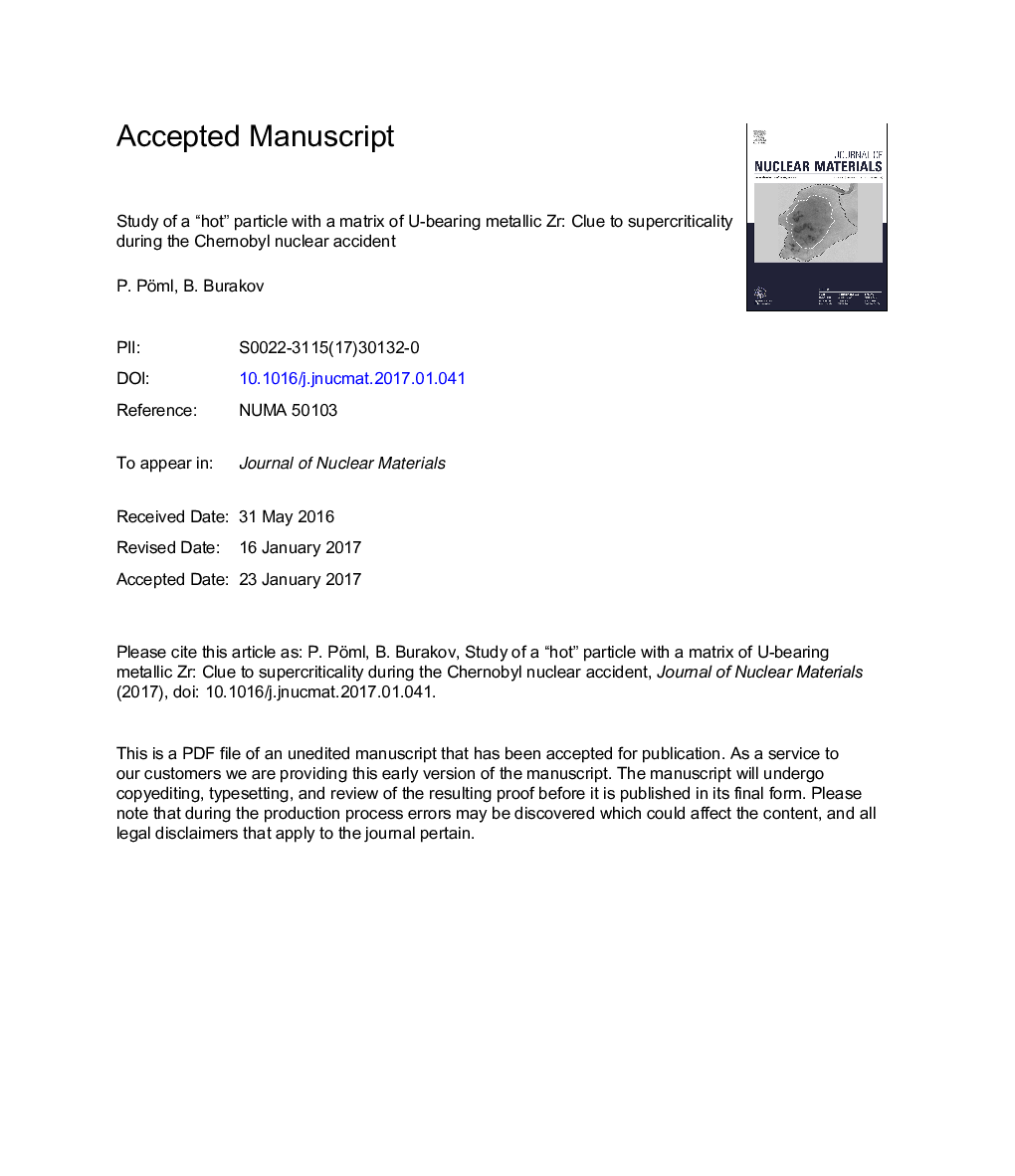| Article ID | Journal | Published Year | Pages | File Type |
|---|---|---|---|---|
| 5454194 | Journal of Nuclear Materials | 2017 | 20 Pages |
Abstract
This paper is dedicated to the 30th anniversary of the severe nuclear accident that occurred at the Chernobyl NPP on 26 April 1986. A detailed study on a Chernobyl “hot” particle collected from contaminated soil was performed. Optical and electron microscopy, as well as quantitative x-ray microbeam analysis methods were used to determine the properties of the sample. The results show that the particle (â240 x 165 μm) consists of a metallic Zr matrix containing 2-3 wt. % U and bearing veins of an U,Nb admixture. The metallic Zr matrix contains two phases with different amounts of O with the atomic proportions (U,Zr,Nb)0.73O0.27 and (U,Zr,Nb)0.61O0.39. The results confirm the interaction between UO2 fuel and zircaloy cladding in the reactor core. To explain the process of formation of the particle, its properties are compared to laboratory experiments. Because of the metallic nature of the particle it is concluded that it must have formed during a very high temperature (>2400âC) process that lasted for only a very short time (few microseconds or less); otherwise the particle should have been oxidised. Such a rapid very high temperature process indicates that at least part of the reactor core could have been supercritical prior to an explosion as it was previously suggested in the literature.
Related Topics
Physical Sciences and Engineering
Energy
Nuclear Energy and Engineering
Authors
P. Pöml, B. Burakov,
